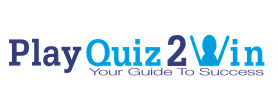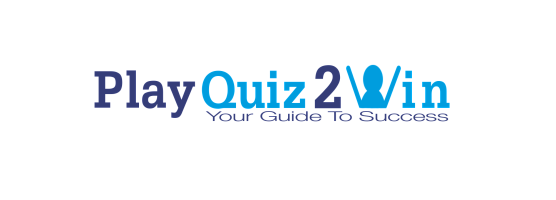You are here: Home >> ToThePoint >> GK - Computer Awareness Objective Questions
Computer Awareness Objective Questions
Questions related to Computer Fundamentals (Hardware, Software, Operating System, Multi-media, etc.), Information Technology, Internet, mobile communications standard such as 2G, 3G, 4G, etc. are asked in various competitive examinations conducted by SSC, UPSC, PSC, LIC, GIC, Railways, Banks, etc. The main objective of these questions is to assess the candidate's awareness about computers and its related components in day to day life.
50 Objective Questions on Computer Awareness (Set-2)
Q1. ___________ cells involves creating a single cell by combining two or more selected cells.
(a) Formatting
(b) Merging
(c) Embedding
(d) Splitting
Q2. The operating system is the most common type of____________software.
(a) Communication
(b) Application
(c) System
(d) Word-processing
Q3. The horizontal and vertical lines on a worksheet are called
(a) Cells
(b) Sheets
(c) Block lines
(d) Gridlines
Q4. The operating system does all of the following EXCEPT:
(a) provide a way for the user to interact with the computer
(b) manage the central processing unit (CPU)
(c) manage memory and storage
(d) enable users to perform a specific task such as document editing
Q5. During the boot process, the____________looks for the system files.
(a) CD
(b) BIOS
(c) CPU
(d) DVD
Q6. ____________ are lists of commands that appear on the screen.
(a) GUIs
(b) Icons
(c) Menus
(d) Windows
Q7. ____________ is the ability of an operating system to control the activities of multiple programs at the same time.
(a) Multitasking
(b) Streamlining
(c) Multiuser
(d) Simulcasting
Q8. The unique signal, generated by a device, that tells the operating system that it is in need of immediate attention is called an:
(a) Action
(b) Event
(c) Interrupt
(d) Activity
Q9. The operating system controls access to the processor by assigning a(n) ____________ to each task requiring the processor's attention.
(a) CPU
(b) Slice of time
(c) Stackevent
(d) Event
Q10. The blocks of code, included in the operating system, that software applications interact with are known as:
(a) application programming interfaces (APIs)
(b) complimentary metal-oxide conductors (CMOS)
(c) device drivers
(d) bootstrap loaders
Q11. A spooler is a(n):
(a) location in memory that maintains the contents of a document until it prints out.
(b) print job.
(c) program that coordinates the print jobs that are waiting to print.
(d) message sent from the printer to the operating system when a print job is completed.
Q12. Virtual memory is typically located:
(a) on a pen drive.
(b) in the CPU.
(c) in a CD drive.
(d) on the hard drive.
Q13. The purpose of a swap (or page) file is to:
(a) maintain pages of documents that are being spooled to the printer.
(b) hold a program's data or instructions in virtual memory when it can't fit in RAM.
(c) prevent thrashing in a multitasking environment.
(d) allow multiple print jobs to print their pages out simultaneously.
Q14. The definition of thrashing is:
(a) swapping data between virtual memory and RAM too frequently.
(b) insufficient hard disk space.
(c) too many processors being managed by the operating system.
(d) inaccurate information stored in the registry.
Q15. All of the following are TRUE of Safe Mode EXCEPT:
(a) Safe Mode is a special diagnostic mode.
(b) Safe Mode loads all non-essential icons.
(c) Safe Mode allows users to troubleshoot errors.
(d) Safe Mode loads only the most essential devices.
Q16. Verification of a login name and password is known as:
(a) Configuration.
(b) Accessibility.
(c) Authentication.
(d) Logging in.
Q17. The combination of the operating system and the processor is referred to as the computer's:
(a) CPU.
(b) Platform.
(c) BIOS.
(d) CMOS.
Q18. All of the following are steps involved in the boot process EXCEPT:
(a) load the operating system into RAM.
(b) the power-on self-test.
(c) activate the basic input/output system (BIOS).
(d) load application programs.
Q19. The ____________, stored on a ROM chip, is responsible for loading the operating system from its permanent location on the hard drive into RAM.
(a) BIOS
(b) API
(c) device driver
(d) supervisor program
Q20. Ensuring that the essential peripheral devices are attached and operational is the ____________ process.
(a) configuration
(b) CMOS
(c) POST
(d) ROM
Q21. The memory resident portion of the operating system is called the
(a) Registry.
(b) API.
(c) CMOS.
(d) Kernel.
Q22. All of the following are TRUE regarding virtual memory EXCEPT
(a) any amount of RAM can be allocated to virtual memory.
(b) the setting for the amount of hard drive space to allocate to virtual memory can be manually changed.
(c) this temporary storage is called the swap file (or page file).
(d) virtual memory is physical space on the hard drive.
Q23. The operating system allows users to organize the computer’s contents in a hierarchical structure of directories that include all of the
following EXCEPT:
(a) Files.
(b) Folders.
(c) Drives.
(d) Systems.
Q24. All of the following statements concerning windows are true EXCEPT:
(a) windows are an example of a command-driven environment.
(b) windows can be resized and repositioned on the desktop.
(c) more than one window can be open at a time.
(d) toolbars and scrollbars are features of windows.
Q25. All of the following statements concerning files are true EXCEPT:
(a) A file is a collection of related pieces of information stored together for easy reference.
(b) Files can be generated from an application.
(c) Files are stored in RAM.
(d) Files should be organized in folders.
Q26. Using Windows Explorer, a plus (+) sign in front of a folder indicates-
(a) an open folder.
(b) the folder contains sub-folders.
(c) a text file.
(d) a graphics file.
Q27. Programs from the same developer, sold bundled together, that provide better integration and share common features, toolbars and
menus are known as-
(a) software suites
(b) integrated software packages
(c) software processing packages
(d) personal information managers
Q28. A data warehouse is which of the following?
(a) Can be updated by the end users
(b) Contains numerous naming conventions and formats
(c) Organized around important subject areas
(d) Contains only current data
Q29. ______________ servers store and manages files for network users.
(a) Authentication
(b) Main
(c) Web
(d) File
Q30. All of the following are examples of real security and privacy risks Except:
(a) hackers
(b) spam
(c) viruses
(d) identify theft
Q31. ______ terminals (formerly known as cash registers) are often connected to complex inventory and sales computer systems.
(a) Data
(b) Sales
(c) Query
(d) Point-of-sale (POS)
Q32. The OSI model is divided into _______ processes called layers.
(a) five
(b) six
(c) seven
(d) eight
Q33. ________ are specially designed computer chips reside inside other devices, such as your car or your electronic thermostat.
(a) Servers
(b) Embedded computers
(c) Robotic computers
(d) Mainframes
Q34. The following are all computing devices, EXCEPT:
(a) notebook computers
(b) cellular telephones
(c) digital scanners
(d) personal digital assistants
Q35. In a ring topology , the the computer in possession of the ______ can transmit data.
(a) packet
(b) data
(c) access method
(d) token
Q36. This part of operating system manages the essential peripherals, such as the keyboard, screen, disk drives, and parallel and serial ports.
(a) basic input/output system
(b) secondary input/output system
(c) peripheral input/output system
(d) marginal input/output system
Q37. Servers are computers that provide resources to other computers connected to a ___________.
(a) mainframe
(b) network
(c) supercomputer
(d) client
Q38. A goal of data mining includes which of the following?
(a) To explain some observed event or condition
(b) To confirm that data exists
(c) To analyze data for expected relationships
(d) To create a new data warehouse
Q39. URL stands for
(a) Universal Research List
(b) Universal Resource List
(c) Uniform Resource Locator
(d) Uniform Research Locator
Q40. A database management system (DBMS) is a-
(a) hardware system used to create , maintain and provide controlled access to a database.
(b) hardware system used to create, maintain, and provide uncontrolled access to a database.
(c) software system used to create, maintain, and provide uncontrolled access to a database.
(d) software system used to create, maintain, and provide controlled access to a database.
Q41. A Proxy server is used for which of the following?
(a) To provide security against unauthorized users
(b) To process client requests for web pages
(c) To process client requests for database access
(d) To provide TCP/IP
Q42. When data changes in multiple lists and all lists are not updated, this causes:
(a) data redundancy
(b) information overload
(c) duplicate data
(d) data inconsistency
Q43. _____________ are words that a programming language has set aside for its own use.
(a) Control words
(b) Reserved words
(c) Control structures
(d) Reserved keys
Q44. ______ describe what is database fields.
(a) Structures
(b) Field markers
(c) Field definition
(d) Field names
Q45. You must install a (n) ____________ on a network if you want to share a broadband Internet connection.
(a) router
(b) modem
(c) node
(d) cable
Q46. A goal of normalization is to __________.
(a) minimize the number of relationships
(b) minimize the number of entities
(c) minimize the number of tables
(d) minimize the number of redundancy
Q47. Granting an outside organization access to internet web pages is often implemented using a (n) ___________.
(a) extranet
(b) intranet
(c) internet
(d) hacker
Q48. The code that relational database management systems use to perform their database task is referred to as-
(a) QBE
(b) SQL
(c) OLAP
(d) JAVA
Q49. Chip is a common nickname for a (n):
(a) transistor
(b) resistor
(c) integrated circuit
(d) semiconductor
Q50. The main purpose of the primary key in a database is to:
(a) unlock the database
(b) provide a map of the data
(c) uniquely identify a record
(d) to store data in ascending order

